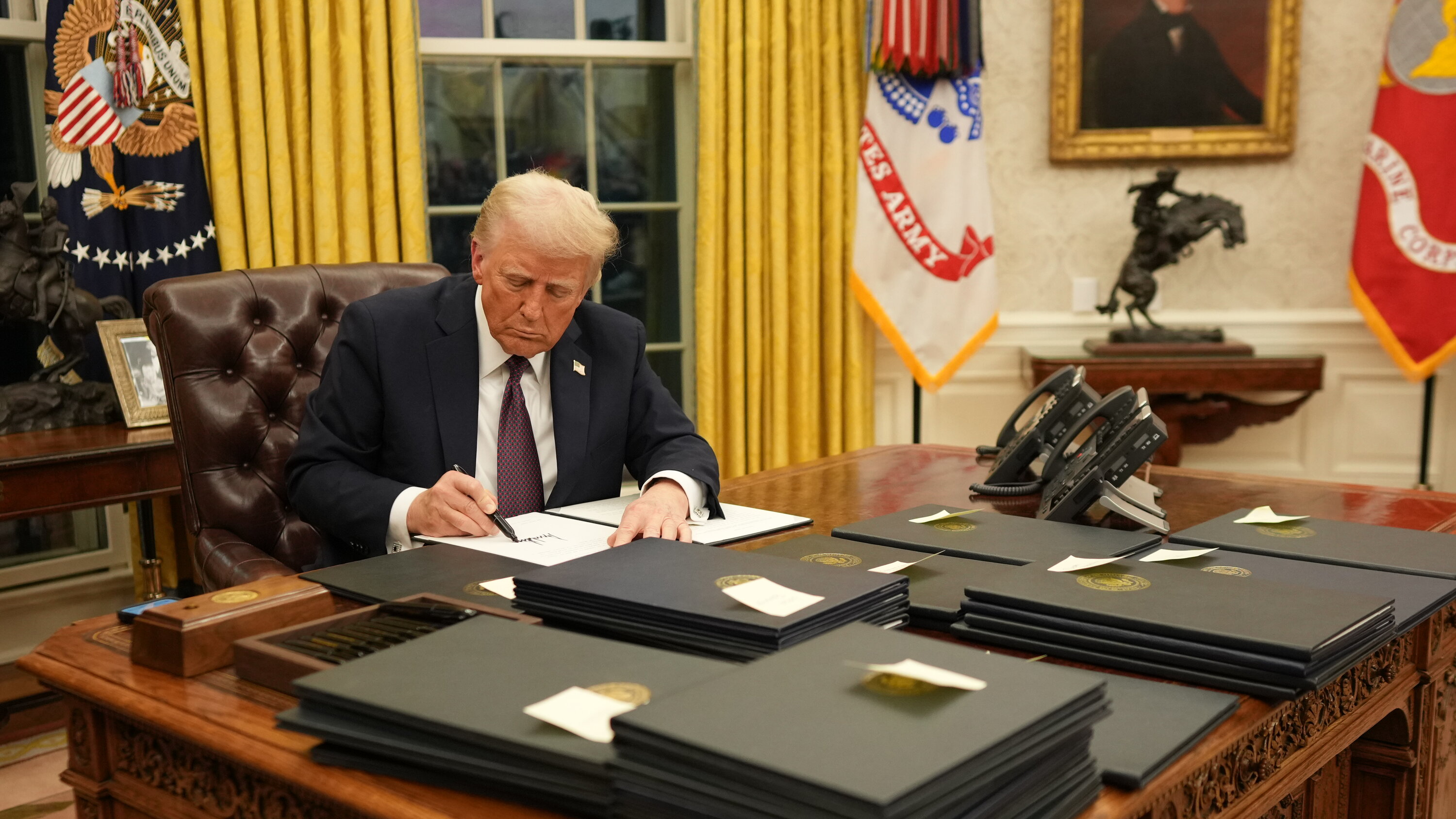Commercial Aircraft And Engine Tariffs: The Trump Administration's Stance

Table of Contents
The Rationale Behind the Tariffs
The Trump administration justified its tariffs on commercial aircraft and engines primarily by citing unfair competition and illegal subsidies provided to Airbus by European governments. This, they argued, created a significant trade imbalance and harmed the competitiveness of American manufacturers like Boeing. The administration framed the tariffs as a necessary measure to protect American jobs and the national security interests tied to the domestic aircraft manufacturing industry. The overarching narrative emphasized a need to redress what was perceived as unfair trade practices.
- Allegations of illegal subsidies to Airbus: The US claimed that European governments provided billions of dollars in illegal subsidies to Airbus, giving them an unfair advantage in the global market.
- Impact on Boeing's competitiveness: These subsidies, the argument went, allowed Airbus to undercut Boeing on price, harming the American company's ability to compete and potentially leading to job losses in the US.
- National security concerns related to aircraft manufacturing: The administration also invoked national security concerns, suggesting that a strong domestic aircraft manufacturing industry was vital for national defense.
- The role of the WTO in adjudicating the dispute: The WTO was engaged to determine the legality of the subsidies and the appropriate response. However, the process proved lengthy and complex.
The Impact of the Tariffs on the Industry
The tariffs had far-reaching consequences for both US and European companies. The imposition of import duties led to increased costs for airlines, impacting their profitability and potentially leading to higher airfares for passengers. Supply chain disruptions were significant, affecting the production and delivery of aircraft and related components. Furthermore, the tariffs sparked retaliatory measures from the EU, exacerbating the negative economic effects.
- Increased costs for airlines: Airlines faced higher costs for new aircraft and spare parts, affecting their operating margins.
- Disruptions to global aircraft manufacturing and supply chains: The tariffs created uncertainty and slowed down production processes, impacting both Boeing and Airbus.
- Impact on aircraft maintenance and repair: The cost of spare parts and maintenance services increased, influencing overall operational expenses for airlines.
- Effects on the global aviation market: The trade dispute created a climate of uncertainty, affecting investment decisions and the overall health of the global aviation market.
Specific Tariffs and Their Targets
The Trump administration imposed tariffs on a range of specific aircraft and engine components. These tariffs varied in their rates, impacting specific product categories and the companies involved. While precise figures fluctuate, the overall impact represented a substantial financial burden on both sides of the Atlantic. Detailed information on specific tariff rates and affected products can be found on the official websites of the US Trade Representative (USTR) and the European Commission.
The Ongoing WTO Dispute
The WTO dispute surrounding the commercial aircraft tariffs remains a complex and protracted legal battle. Both the US and the EU presented their arguments, citing various WTO rules and precedents. The process involved multiple rulings and appeals, with each side challenging the other's claims. The complexities of the WTO system, including its dispute settlement mechanisms, have contributed to the length and intricacy of this ongoing case.
- Timeline of WTO rulings: The WTO has issued several rulings in this case, with appeals and counter-appeals extending the process.
- Arguments presented by both sides: The US and EU have presented extensive legal arguments, focusing on the interpretation of WTO rules related to subsidies and countervailing measures.
- Potential outcomes and their implications: The ultimate outcome of this dispute will significantly impact future trade relations between the US and EU in the aviation sector and could set precedents for future trade disputes.
Conclusion
The Trump administration's imposition of tariffs on commercial aircraft and engines stemmed from concerns about unfair competition and subsidies. However, these actions triggered a significant trade war, leading to negative economic consequences for both the US and EU, impacting airlines, manufacturers, and consumers alike. The ongoing WTO dispute further highlights the complexity of international trade relations and the challenges of resolving major trade disagreements. Understanding the intricacies of commercial aircraft and engine tariffs is crucial for navigating the complexities of global trade. To learn more, consult resources from the WTO, the USTR, and the European Commission. Staying informed about developments in this area is critical for anyone involved in or affected by the global aviation industry.

Featured Posts
-
 Sensex Surges 1400 Points Nifty Above 23800 Top 5 Reasons For Todays Market Rally
May 10, 2025
Sensex Surges 1400 Points Nifty Above 23800 Top 5 Reasons For Todays Market Rally
May 10, 2025 -
 Cassidy Hutchinson Memoir A Deep Dive Into The January 6th Hearings
May 10, 2025
Cassidy Hutchinson Memoir A Deep Dive Into The January 6th Hearings
May 10, 2025 -
 Dijon 2026 Les Enjeux Ecologiques Des Municipales
May 10, 2025
Dijon 2026 Les Enjeux Ecologiques Des Municipales
May 10, 2025 -
 Bangkok Post Reports On The Mounting Pressure For Transgender Rights
May 10, 2025
Bangkok Post Reports On The Mounting Pressure For Transgender Rights
May 10, 2025 -
 Where To Start A Business A Map Of The Countrys Best New Markets
May 10, 2025
Where To Start A Business A Map Of The Countrys Best New Markets
May 10, 2025
